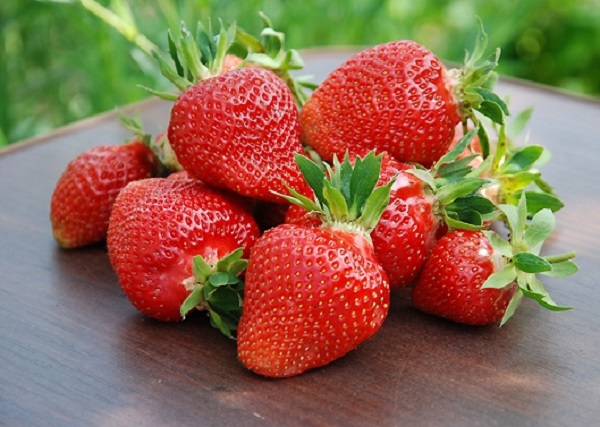Strawberry Clery is very popular. This variety of berry crops is distinguished by its large size and juicy scarlet color. Tasting strawberries Clery, you will be delighted. It has a rich taste and unique aroma. In this article we will talk about the description of this wonderful Italian variety.
Table of contents
The main features of strawberry variety Clery
Clery strawberries are obtained by selective methods in Italy. This variety of berries was bred at the company “Matsoni Group” in 1996 after the Sweet Charlie and Onebor were crossed. Now this type of berry culture has been protected by a patent since 1998.
The ripening of this strawberry variety is early, because it will begin to bear fruit at the end of May or in the first of June on the land plot without shelter in the central European part of Russia. Flowering begins in early May. The Clery strawberry reaches a large size, the berry can weigh 35-40 g, neither giants nor trifles are found.
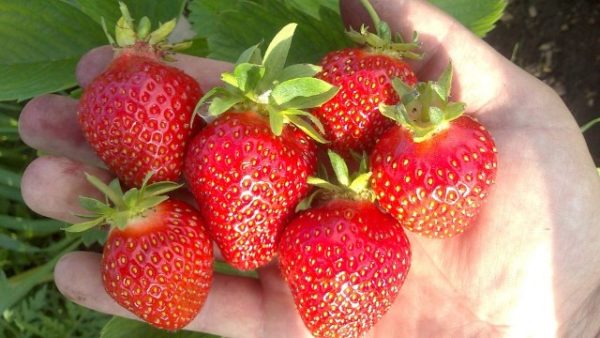
It tastes very sweet. The strawberry fruit is scarlet, very bright and very shining. The shape of the fruit resembles a cone. The pulp of berries differs in density, but at the same time tasty on taste. We can not say that the productivity of strawberries at the highest level. Fertility - average, strawberry Clery can bring up to 290 centners from 1 year The bushes of this berry culture are high, roundish-shaped, the leaves on the bushes are average, slightly spreading.
A suitable climate for cultivation is one that can be described in hot summer and frosty winter, but with a small amount of precipitation, that is, the temperate continental climate of European countries. Of course, try to grow a plant in the area where winters are harsh, for example, in Siberia, or at a height like in the Urals.
Strawberry Clery - unpretentious plant. This type of plant is characterized by endurance, resistant to winters and an excellent level of drought resistance, but low frost resistance.
The yield of this variety of strawberries becomes good in the second year, and lasts about four years, after fruiting will decrease, and the berries will become small.
Cleries belongs to self-pollinated plants, no need to acquire pollinators.
The positive and negative aspects of growing berries
Among the advantages of this variety are the unique taste and aroma of berries. But if the plant does not receive proper care, then the taste becomes worse. Clery is not afraid of fungal diseases. But in wet and cold weather spots may appear on the leaves.
Another positive feature of this plant is the easy possibility of breeding a mustache. Plants are distinguished by the demands of summer temperatures and the availability of light. Clery poorly resistant to frost. But diseases and pests do not threaten this variety of strawberries.

Growing regions
Northern Italy is great for strawberries, because it is for this region that the variety was obtained.European countries with a temperate continental climate.
Also, the plant will take root in the central European part of Russia, in central Ukraine, on the territory of the Polesia Lowland, and on the land of Belarus. The northern cold regions of the Urals are not suitable for growing, because the Clery strawberry is an early variety, designed for a short light day.
Landing process
If this is the first landing, then you need to prepare the ground well. It is necessary to dig a plot of land, remove all the weeds, the remaining roots. It is important to loosen the soil. Suitable sandy soil.
Then you need to choose strawberry seedlings Clery.
The best time for planting this variety is mid-August. It should be planted at a distance of 37-42 cm, taking into account the shape of the branches of the plant bush. Make small pits in the ground. As a fertilizer for the soil, you can apply ash or granules of humus, specifically provided for this.
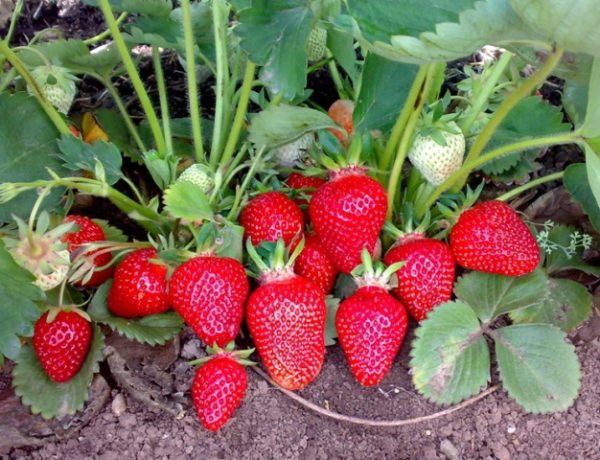
Observe the planting time is important, as the plant must develop good roots, adapt and move to a rest period. When spring comes, the flower stalks begin to sprout early and there will be a lot of them. For the first time there will be many fruits, but the fruits will be small.
If planted in September, then in the first year it will be the opposite: the quantity is small, but the dimensions will be large. In the first year, aim at increasing the bushes, roots. Therefore, those who have experience in this business simply remove the first flowers, in order to direct all the power of Clery in the right direction.
Over the next years, you can feed strawberries with various fertilizers containing minerals.
The best way to grow is cassette technology. Not advised to grow technology for Frigo. If you grow strawberries in closed ground, the strawberry fruiting will increase. Despite the excellent drought tolerance of strawberries, it is better to use the following method of watering: water is sent to the root zone of the plant in small portions, using dropper dispensers. Thanks to drip irrigation, seedlings will take root well. The soil next to the Clery shrubs should be kept moist, but do not allow dampness.
As the snow has gone and the ground has dried, remove all trash and last year’s leaves from the beds. Then the bushes of this plant should be mulch sawdust, moss, humus, or apply fallen pine needles.
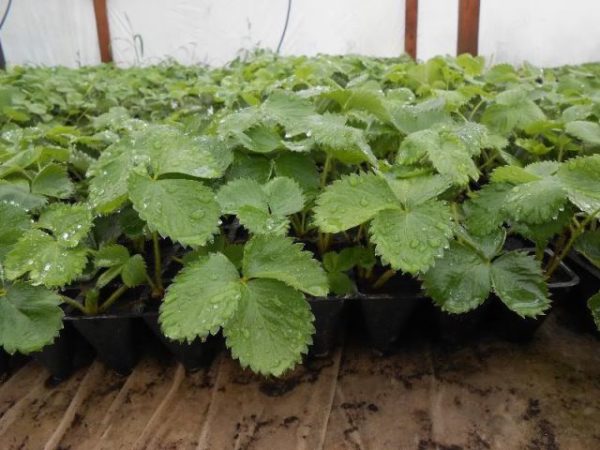
Breeding methods
There are several breeding methods:
Usually for breeding strawberries, a Clery has a mustache, a lot of them in this variety. Find strong young groups of leaves, closely located on short, only slightly towering shoots.
Plant sockets in pots and attach to the ground. For some time the plant exists independently, but it still feeds through the antenna of the main bush of the plant.When the bush that is planted in the pot has 5-7 leaves, remove contact with the main bush, and after this small bush plant on the prepared place. Now you can pour.
There is another way - the division of the bush. This method is applied in spring or autumn. Dig out a sick strong bush that’s already two or three years old. A bush should have at least one leaf rosette and young roots. Now not one bush, but several at once, plant them on the prepared places.
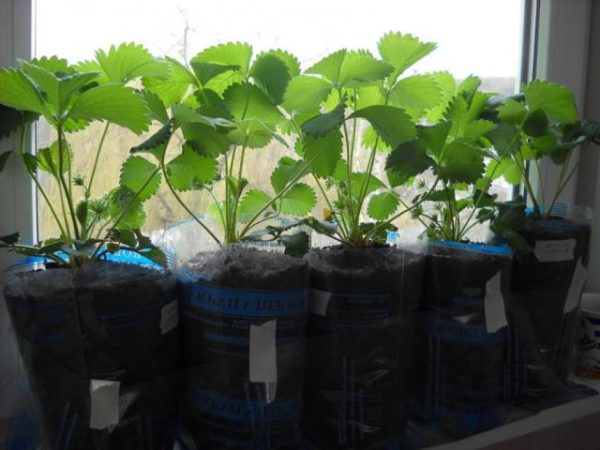
And the most time consuming method is seed germination. Buy seeds, drain their capacity in February, before that soak them in a special solution (2 drops of epine per 0, 1 l). To check the seeds for scrap, put into the solution, and the bad seeds will rise, but the good ones will be on the bottom.
In the case when strawberry seeds are laid in the ground, cover them with a layer of not more than 0, 5 cm. Ventilate the container and water a little with water, keeping the ground moist. Do this for 14 days.
Diseases and pests
Every gardener and farmer needs to know what diseases and pests exist, as well as methods to combat them. Consider them:
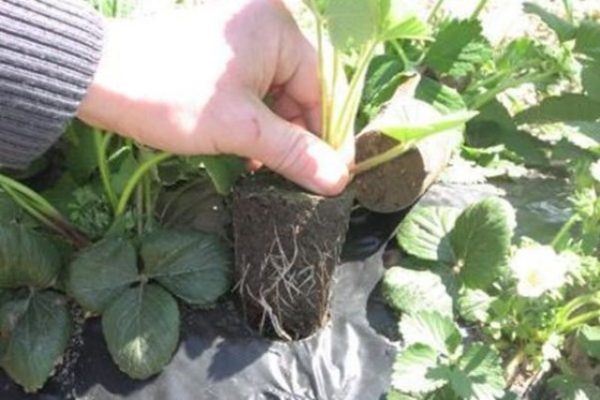
- Clery's strawberry can face a disease caused by imperfect fungi, members of the genus Gloeosporium, Colletotrichum, Kabatiella, the so-called anthracnose. Also, the plant may appear other types of spots. Signs of this disease will be spots about 3 mm in size on the leaves of the plant. On the leaves of bushes there will be spots of different colors: white, orange, brown, crimson. After a period of time, they will grow, and the plant species will deteriorate. It will become shriveled and begin to dry out. To prevent anthracnose, before the flowering period, use for processing the plant 2% Bordeaux liquid. Do this two or three times. But if the disease is already there, apply the one-component fungicide Antracol in the proportion of 15 g per 10 l of water or use the quality fungicide Ridomil Gold in the proportion of 25 g per 10 l of water. When the time of fruiting is over. Use the Switch for 750 g per 1 ha.
- Clery's strawberry can be attacked by aphid. Under the influence of this pest, the leaves of the plant begin to curl and dry out, the plant takes on a fading appearance. If aphids a little. You can remove it with your hands and then get rid of it. But if aphids are very abundant, then apply garlic brew, which is diluted in 10 liters of water with 0, 2 liters of garlic juice, 0, 2 liters of onion juice and 0, 15 liters of dandelion juice. You can also spray the solution with soap (60 g of soap in 10 liters of water).
- Under the influence of the weevil, the buds and the ovaries of the strawberry stop developing and dry up. In order to avoid the weevil, you should not plant Clery near the raspberry, because the weevil can switch from raspberry to strawberry. Remove leaves that have a sore and damaged look, and loosen the surface next to the bushes. It is also possible to use a solution of potassium permanganate in the proportion of 5 g per 10 l of water or the drug Inta-vir, dissolving 2.5 tablets of insecticide in 10 l of water.
- A strawberry mite can attack a Clery strawberry. Because of it, the leaves of the plant will twist and wrinkle and darken. To cope with it. Dissolve 8 g of colloidal sulfur in 10 liters of water or 60 g of Malathion in 8 liters of water.
Cleries - a real find for gardeners and farmers, it will delight you with a constant harvest, as well as beautiful juicy and fragrant berries.If you are fully serious about fulfilling all the requirements for planting, growing and leaving this strawberry variety, then fully enjoy your work. Victoria will bring a great harvest!
